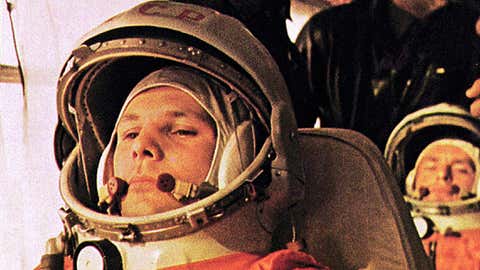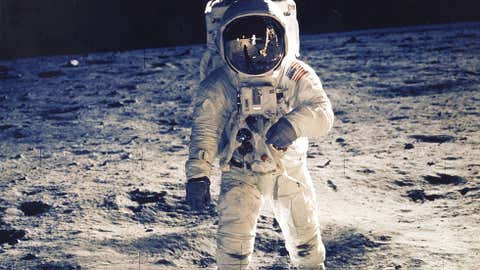
Humanity’s fascination in the heavens is common and enduring. Looking for know-how and info, checking out the mysterious, and identifying new worlds is reported to be element of our species’ genetic programming. This really curiosity has not only taken us to every single nook and corner of Earth—traverse by mountains, forests and deserts, and dive into assorted seas and oceans—but has also led us absent and over and above from our incredibly personal earth.
To quench this by no means-ending thirst for curiosity, humans commenced entering into space in the 1960s. And considering that then, we have consistently undertaken for a longer period and trickier journeys, to discover locations farther and alien.
Now, as we celebrate human spaceflight forward of the International Day of Human House Flight 2021—to be noticed globally on Monday, April 12—we just take a search at four of the largest milestones we have collectively obtained as a species, in this field.
1. The 1st human in room
On April 12, 1961, Soviet cosmonaut Yuri Alekseyevich Gagarin grew to become the initial-ever human remaining to go away Earth and journey into area. Aboard the spacecraft Vostok 1, the then 27-12 months-old examination pilot and industrial technician orbited the Earth at a utmost altitude of 327 kilometres, correctly also starting to be the initial human to ever orbit our earth.

Yuri Gagarin, the pilot of the Vostok 1, is on the bus on the way to the start. The cosmonaut driving Gagarin is German Titov, the back again-u pilot who turned pilot of Vostok 2.
(NASA)
Immediately after the orbit, as the capsule started its descent, Gagarin ejected himself from the capsule at a top of about 7,000 metres as prepared, and landed again on Earth employing a parachute.
But apparently, this simple fact was saved hidden by the Soviet Union. They feared that the Fédération Aéronautique Internationale (FAI)—the entire world governing physique for setting benchmarks and retaining documents in the field—would not certify Gagarin’s spaceflight file as, at the time, the pilot was essential to land with the craft to formally entire a spaceflight.
Even so, the lie shortly became evident, but Gagarin’s spaceflight information were even so qualified and reaffirmed by the FAI, who finished up revising their policies. The announcement of this historic feat threw Gagarin into quick worldwide stardom, and to this day, he remains globe-renowned as the 1st human to go to space.
2. The very first-at any time spacewalk
To officially conduct a spacewalk, an astronaut must get out of a auto whilst in place. This very courageous feat was attained for the quite initially time by Soviet cosmonaut Alexei Leonov who, on March 18, 1965, exited the Voskhod 2 mission capsule to ‘walk in space’.
Leonov exited the room capsule whilst still sure to it by a 4.8-metre-lengthy tether, and floated freely in space for 12 minutes and nine seconds.
By the finish of the spacewalk, having said that, his go well with had ballooned as it was no for a longer period constrained by the spacecraft’s inner atmosphere, inflating to the point where he couldn’t re-enter the airlock! Only soon after opening a valve to bleed-off the suit’s force further than the safety limit and making it much more flexible, was Alexei ready to get back inside of the capsule, while he did conclusion up suffering bends from decompression in the system. The return to Earth was stuffed with difficulties as well, but none of them took away Leonov’s title of the initially-ever spacewalker.
3. The very first individuals on the moon

Astronaut Excitement Aldrin strolling on the Moon throughout the Apollo 11 mission
(NASA)
One particular of our major achievements or a ‘giant leap’ in human area-flight occurred on July 20, 1969, when US astronaut Neil Armstrong turned the first human to at any time phase foot on the moon.
Blasting off from the Earth on July 16, 1969, Apollo 11 carried Neil Armstrong, Edwin “Buzz” Aldrin and Michael Collins to Earth’s normal satellite. Soon after achieving their desired destination 4 times afterwards, a Lunar Module known as Eagle took the former two on to the lunar floor, and submit landing, Neil Armstrong took that giant leap for mankind by getting the initially human to move on the moon.
While Collins stayed in the orbit all over the moon, conducting experiments and taking photos, Armstrong and Aldrin walked around on the lunar surface area for three hours, conducting their individual established of experiments and amassing bits of moon filth and rocks. They also set a U.S. flag on the moon and still left driving a indicator that reads: “Here adult men from the earth Earth very first established foot on the moon July 1969, A.D. We came in peace for all mankind”.
4. The initially people aboard the Global Space Station
In November 2000, a new period of global cooperation in area commenced when the to start with household crew arrived aboard the Intercontinental Space Station (ISS). A multinational collaborative task involving five taking part place organizations NASA (United States), Roscosmos (Russia), JAXA (Japan), ESA (Europe), and CSA (Canada, this modular place station has been serving as a microgravity and space ecosystem investigate laboratory considering the fact that its start in November 1998.

U.S. astronaut and commander Expedition 45, Scott Kelly, can take a selfie at the International House Station just in advance of the 15th anniversary of continual human existence in area on Nov. 2, 2015.
(NASA)
The ISS remained uncrewed for the preliminary two a long time, and it was not until November 2, 2000, that the 1st household crew, consisting of two Russians Yuri Gidzenko and Sergei Krikalev and NASA astronaut Invoice Shepherd, arrived at the ISS by Expedition 1.
The 3-person crew stayed aboard the station for 136 times, from November 2000 to March 2001, marking the first extended-period continue to be on the ISS. This was also the beginning of an uninterrupted human presence on the station, which continues to this day.
As of November 2020, 242 astronauts, cosmonauts, and house travelers from 19 distinct nations have visited the room station, numerous of them several occasions. This list consists of 152 Individuals, 49 Russians, 9 Japanese, 8 Canadians, and 5 Italians.
Indian human-spaceflight capabilities
India far too is established to reinforce its foothold in the industry of human spaceflight with the Indian Place Exploration Organisation’s (ISRO) Gaganyaan mission under the Indian Human Spaceflight Programme. The state had formally entered the fray of human spaceflight back again in April 1984, when former Indian Air Drive pilot, Wing Commander Rakesh Sharma, grew to become the first and only Indian citizen to travel to place aboard the Soyuz T-11.
Now, in spite of the delays brought on by the COVID-19 pandemic, the manned Gaganyaan mission is predicted to start in 2023. In this maiden crewed mission, ISRO’s largely autonomous 5.3-ton capsule will orbit the Earth at a 400 km altitude for up to seven times, with a two- or three-man or woman crew on board.
On a world-wide scale much too, preparations to send out individuals back again to the moon and to our neighbouring world Mars have ongoing in spite of the pandemic and other troubles. The curiosity and determination our species carries on to exhibit make it seem to be extra likely that whilst the Earth is the cradle of humanity, mankind may possibly not keep in this cradle for good just after all.
**
For weather, science, and COVID-19 updates on the go, down load The Climate Channel Application (on Android and iOS retail store). It really is cost-free!

